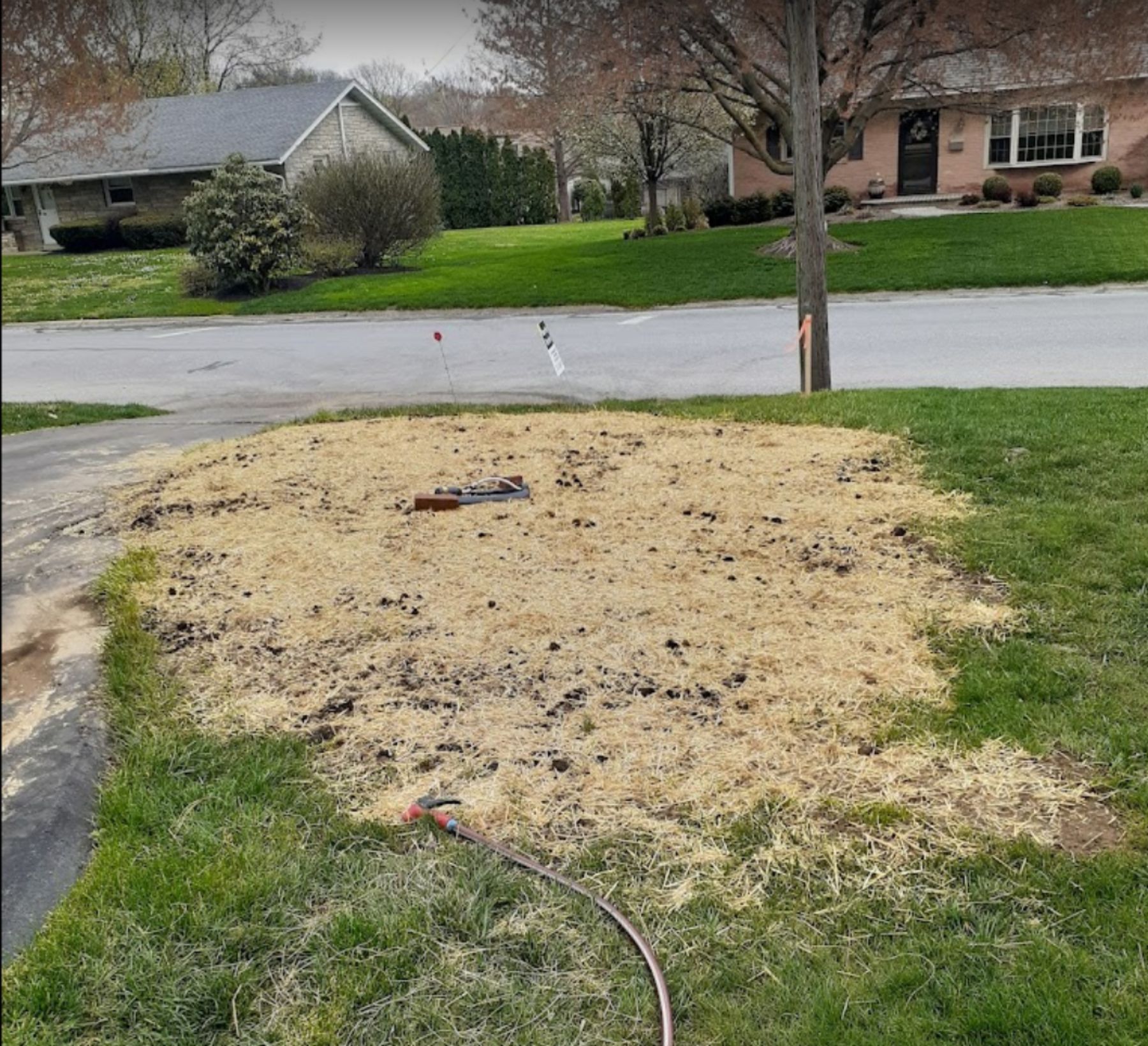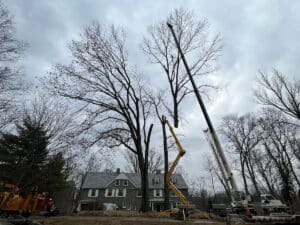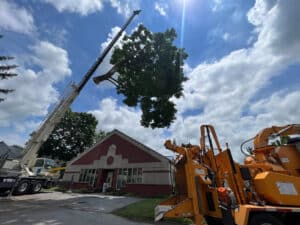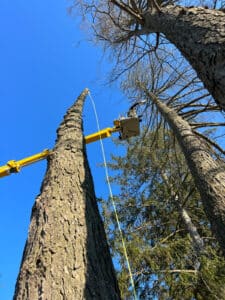Key Points
- Many tree root problems start when aggressive surface‑rooted species get planted too close to driveways, sidewalks, or foundations.
- Most PA foundations are rarely harmed by tree roots, but driveways, walkways, and pavement take the brunt of visible cracking and lifting.
- Picking the right tree species and planting location is easily the best prevention; in severe cases, removing the tree is the only dependable fix.
- Homeowners with a driveway damaged by roots often need to choose between repairing the surface or removing the tree causing the pressure.
Folks across Pennsylvania deal with it all the time: healthy trees doing what healthy trees do, sending their roots wherever the soil feels softest and the moisture feels plentiful. And sometimes that path leads straight under a driveway, slab, or sidewalk.
Below, we’re breaking down what actually causes tree root trouble, why most home foundations stay perfectly fine, and the practical steps you can take before those bumps turn into repair bills.
How Tree Roots Grow in Pennsylvania Soil
Roots aren’t out roaming the yard looking for concrete to break, they’re hunting for softer soil, steady moisture, and pockets of nutrients. In many PA neighborhoods, areas along driveways and sidewalks stay a little cooler and a little wetter, and that creates easy pathways for roots to move through.
Certain trees spread their roots across the surface like a big wooden web. A silver maple, for instance, sends out long, shallow roots that slide under sidewalks and driveways because the compacted soil beneath these surfaces still offers just enough wiggle room to grow. Other species shoot their roots downward instead of outward, keeping most of their growth below the level where they could disturb pavement.
Do Tree Roots Actually Cause Foundation Damage?
Most homeowners imagine roots pushing straight through a concrete foundation, but the real story is far less dramatic. Roots generally move around concrete, not through it, because poured walls and modern block foundations aren’t an attractive source of moisture or nutrients. That’s why true foundation damage from roots is unusually rare in Pennsylvania.
That said, older homes with softer block walls, poor grading, or regular water pooling along the foundation line are more vulnerable. If the soil repeatedly shifts due to moisture changes, roots may follow the softened soil paths and add pressure to already‑weak spots.
Even in these cases, the issue is usually the soil movement, not the roots behaving badly.
Why Driveways and Sidewalks Suffer More
Driveways and sidewalks sit directly above the zone where roots naturally spread. As roots thicken over time, they push upward against the slab, creating uneven surfaces, cracks, and the kind of bumps that feel like a miniature speed ramp whenever you pull into the driveway.
Freeze–thaw cycles make it worse. The slab shifts as temperatures rise and drop, the soil swells, and those growing roots keep widening the gap. What starts as a small lift can, over several seasons, turn into a noticeable hump and a crack that runs like a fault line across the pavement.
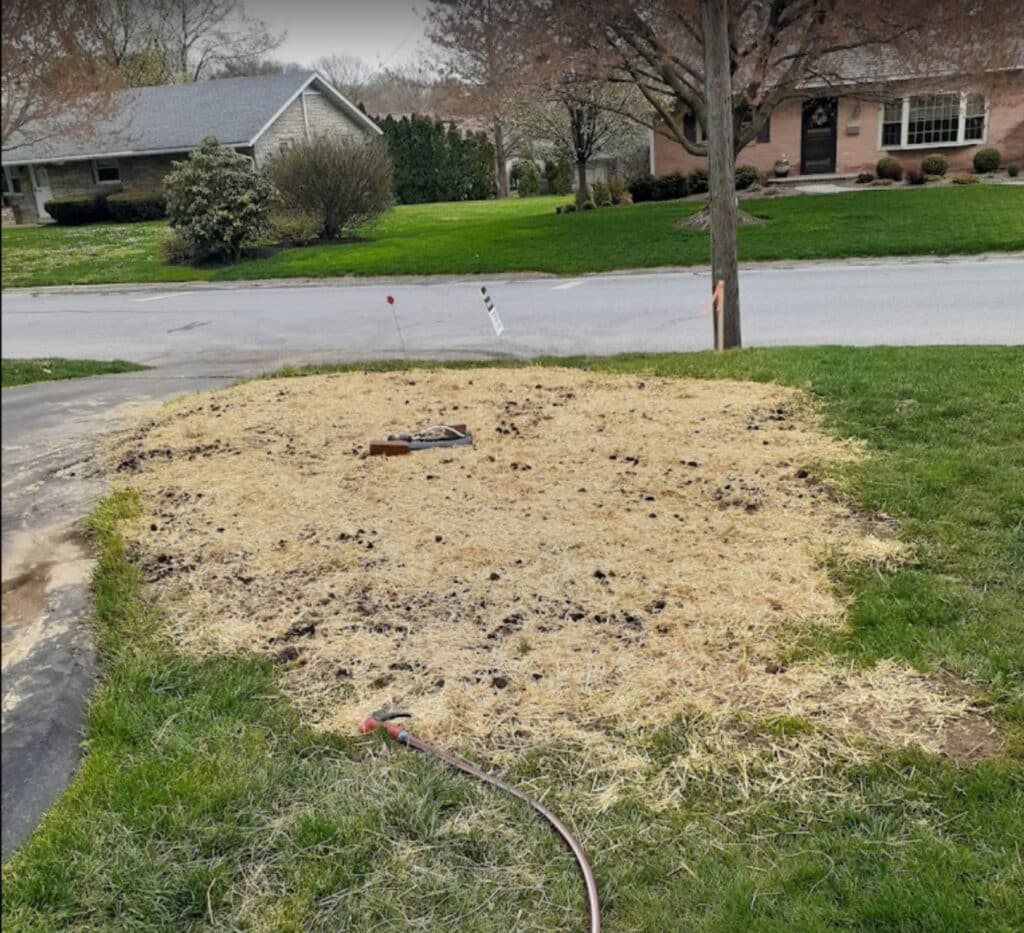
What to Do When Roots Are Encroaching on Structures
When a single root is inching its way toward a driveway or sidewalk, homeowners sometimes ask about simply cutting the root. That’s possible in certain situations, but it comes with a giant caveat: no one can promise the tree will stay in perfect health afterward.
Cutting roots interrupts how the tree absorbs water and nutrients. Many trees adapt, but older or stressed trees may decline. That’s why, in PA, root pruning works best as a short‑term fix for mild cases.
For severe cases—where the driveway is already lifting, the sidewalk has cracked, or the space around the slab feels distorted—the only option that truly solves the problem long‑term is removing the tree. Once the root has grown large enough to shift concrete, it will continue pushing upward year after year.
Repair Options for Driveway, Sidewalk, and Pavement Damage
If the damage is light, resurfacing may buy you some extra years of smooth pavement. But resurfacing doesn’t solve the growing root beneath it.
When cracks widen or the slab lifts unevenly, the repair usually means either replacing the affected area or removing the root system causing the pressure. Replacing a single sidewalk panel is common and fairly straightforward. Driveway repairs require more digging because the root often runs long distances under the slab.
Roots under a sidewalk can often be reached by digging out a narrow trench along the lifted portion. But again, removing that root may lead to long‑term stress on the tree itself.
Insurance, Liability & Public Adjuster Insights
Homeowners regularly ask us who pays when roots cause damage. In most Pennsylvania situations, the property owner whose tree caused the problem is the one responsible for the repair.
Homeowners insurance normally does not cover damage from a tree root unless there’s a related peril involved, something like a sudden pipe rupture caused by shifting soil. Even then, the coverage varies.
If your home’s foundation shows evidence of soil movement or root pressure, a public adjuster may help you document the affected area for a possible claim, but root pressure alone rarely qualifies.
When It’s Time to Remove the Tree Entirely
Eventually the conversation turns to practicality: is this tree still worth the trouble? If the slab keeps lifting, cracks keep widening, or the roots continue inching toward the house, the tree may be creating more problems than shade.
Tree removal is the last resort, but sometimes the only path that prevents further damage. Costs depend on tree size, access, and root spread, but homeowners often find removal cheaper than repeatedly repairing the same stretch of driveway.
How to Prevent Root Problems Before Planting
The smartest time to prevent tree root damage is the day you decide where to plant the tree. A few simple steps will go a long way:
- Pick tree species that match the space you have. Some varieties stay polite with their root spread, while others behave like they’re claiming new territory.
- Ask the nursery whether the species you’re considering has a reputation for surface roots or invasive roots.
- Plant trees far enough from houses, sidewalks, and driveways so the root system has room to grow without disturbing hard surfaces.
- In some cases, installing a root barrier at planting helps guide roots downward instead of outward.
Being careful on the front end saves you from future problems like cracks, lifting slabs, and the constant worry of roots creeping too close to your home.
Work With a Trusted PA Tree Service – Call Today for a Free Estimate
Sunny Slope Tree Service works across Lancaster County and neighboring towns helping homeowners sort out root problems before they become bigger repair bills. If you’re searching for a tree removal company near me or need someone near you to check out a lifting driveway, our crew can pinpoint the cause and walk you through your best options.
From root pruning to full tree removal, we understand how Pennsylvania soils behave and which tree species tend to cause the most trouble.
Need help with a root issue? Contact Sunny Slope Tree Service for an on‑site inspection and a free estimate today.
FAQs
What do you do if tree roots are damaging foundation?
Start by having a professional inspect the area to determine whether the pressure is coming from the roots or shifting soil, then decide whether root pruning or tree removal is the safer long‑term fix.
Who is responsible if tree roots are causing damage?
In Pennsylvania, the property owner whose tree caused the damage is typically responsible for the repairs.
Does homeowners insurance cover foundation damage from tree roots?
Most policies do not cover gradual root damage, though sudden pipe breaks or related perils may qualify depending on the carrier.
When should I be worried about tree roots?
You should pay attention when cracks widen, slabs begin lifting, or roots appear above the soil near driveways, sidewalks, or your home’s foundation.
What do you do when tree roots push up the driveway?
Your options are resurfacing for a temporary fix or removing tree or the problem root—and in severe cases, removing the tree entirely.
How much does it cost to remove tree roots under concrete?
Pricing varies widely, but most homeowners can expect a few hundred dollars for a small root and far more if the job requires concrete removal or tree removal.
How to stop tree roots from growing under concrete?
Root barriers or relocating the tree are the only dependable methods, since cutting roots offers short‑term relief but doesn’t stop future growth.
Can a tree recover from root damage?
Many trees bounce back from light root pruning, but older or stressed trees may decline if major roots are removed.

